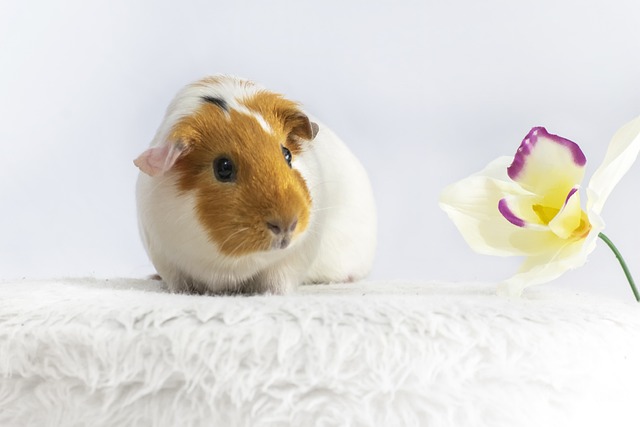Train Pet Rats To Use Litter Boxes: Tips & Tricks
There are some affiliate links below, but they are all products I highly recommend. For more info, view my disclosure here.
Pet rats are highly intelligent and social animals that make great companions for individuals seeking a unique pet experience. However, just like any other pet, owning a rat requires proper care and maintenance to ensure their health and wellbeing.
One essential aspect of rat care is litter box training, which not only keeps their living environment clean but also provides mental stimulation for the rats.
Below, we’ll explore effective tips and tricks for training pet rats to use litter boxes. We will discuss the necessary supplies and placement of litter boxes, as well as how to encourage desired behavior through positive reinforcement.
Additionally, we will provide valuable information on preventing rats from flipping their litter box and using different types of bedding for the rest of their cage.
With the proper training and care, pet rats can easily adapt to using litter boxes, making them a low-maintenance and enjoyable pet to have.
Facts about Pet Rats
Pet rats are highly intelligent animals that can be trained to use litter boxes. Litter box training is essential in keeping their living space clean, and it also provides a designated area for rats to urinate and defecate. Additionally, litter box training is a great way to bond with pet rats, as they enjoy learning and training.
To successfully litter train a pet rat, litter boxes should be strategically placed in different locations of their cage. Litter boxes should be placed in every corner of each level of the cage, and additional litter boxes should be placed in locations where rats have defecated outside of the box.
Feces should be picked up and placed inside the nearest litter box, and rats should be gently scooped up and placed inside the nearest litter box if they start to defecate or urinate in an area other than their litter box. With patience and consistency, litter box training can be a successful endeavor for pet rat owners.
Supplies and Placement
Supplies necessary for litter training include appropriate litter boxes and strategic placement within the rat’s living environment.
Litter boxes should be placed in every corner of each level of the cage, with additional boxes placed in locations where rats have defecated outside of the box.
Clear litter boxes of all poop and urine at least once daily to maintain a clean and healthy living environment for the rats.
In addition to litter boxes within the cage, rats can also be litter trained outside of their cage using paper towels.
Paper towels should be strategically placed in areas where rats are likely to urinate and defecate, and rats should be placed on the paper towels immediately when taken outside of their cage.
Rats can be taught to urinate in their litter box by observing them when they are about to urinate and gently placing them in the litter box.
With consistent training and positive reinforcement, rats can be successfully litter trained and provide a more hygienic living environment for both the rats and their owners.
Tips for Litter Box Training
Effective litter box training for rats involves consistent placement of designated bathroom areas and positive reinforcement techniques.
Start litter box training right away and to use more litter boxes if rats are still pooping everywhere. Moving litter boxes to locations where rats are pooping and demonstrating to rats that litter boxes are where poop needs to go can also be helpful.
Placing rats in the litter box right after they have eaten and praising them if they are already in their litter box can encourage desired behavior. Gently steering rats away from placing food in their litter boxes is also helpful. Consistency is key in litter box training, as is supervising rats closely until they learn where to poop.
Placing a couple of pieces of poop on each of the paper towels or in their litter boxes can also provide guidance for rats. If rats keep wanting to poop in one spot, placing a litter box or paper towels there can be effective. Taping down the edges of paper towels can make them harder for rats to take out.
Providing rats with something else to use for building nests and being careful with dusty litter that can cause respiratory problems are also important considerations.
Rats should do fine switching from paper towels to litter, and different types of litter boxes can be used if rats continue to flip them over.
Using positive reinforcement to encourage desired behavior, such as giving treats or praise, can help rats to learn more quickly. Additionally, observing rats for signs of needing to urinate or defecate and keeping paper towels nearby for rats to use as a bathroom on the shoulder can be helpful. Different types of bedding can be used for the rest of the cage, and neutering male rats can reduce marking behavior.
By following these tips and tricks, pet owners can successfully litter train their rats and create a cleaner and more comfortable environment for both the rats and themselves.
Additional Information and Resources
Observing rats for signs of needing to urinate or defecate can be helpful in identifying the optimal locations for placing litter boxes or paper towels. Some common signs include sniffing, circling, and crouching. Placing litter boxes in these locations can encourage rats to use them and prevent them from urinating or defecating in undesirable areas.
Additionally, providing multiple litter boxes on different levels of the cage can make it more convenient for rats to use them. Neutering male rats can also reduce marking behavior and make litter box training easier.
Shredded newsprint can be used as a nesting material, and different types of bedding can be used for the rest of the cage.
Verbal cues can also be used to train rats to use the litter box. Overall, litter box training can teach rats to use designated areas for urine and feces, making for a cleaner and more hygienic living environment for both rats and their owners.
Read Next: Ways To Build Trust & Bond With Pet Rats





